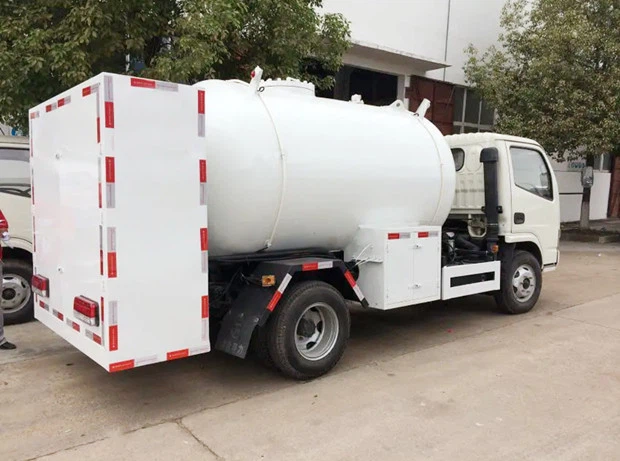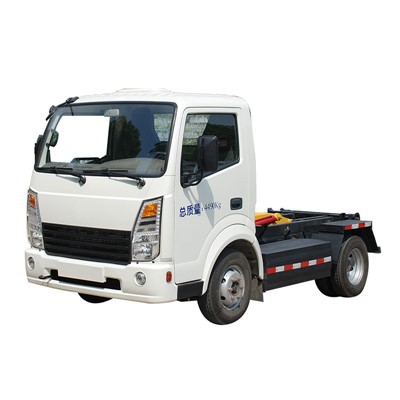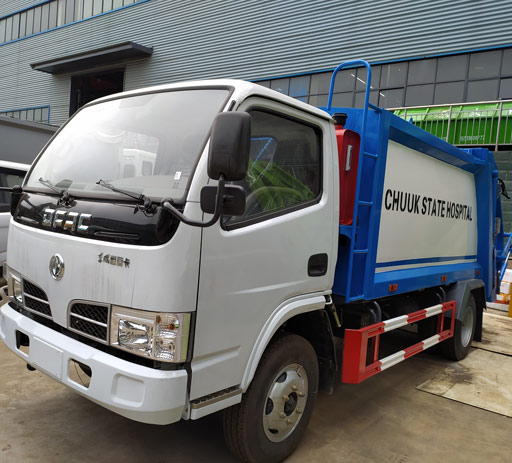Tanker Truck Size: A Comprehensive Guide

Introduction
Tanker trucks play a vital role in transporting various liquids, ranging from water to hazardous materials. Understanding the different sizes of tanker trucks is crucial for businesses, logistics managers, and environmental safety professionals. This article will delve into the various tanker truck sizes, their applications, specifications, and what factors to consider when selecting the right size for specific transport needs.
Understanding Tanker Truck Sizes
What is a Tanker Truck?
A tanker truck is a specialized vehicle designed for transporting liquids. These trucks come in various shapes and sizes, tailored to carry different types of liquids safely and efficiently. Common examples include those used for fuel delivery, water transport, chemical hauling, and food-grade liquids.
Types of Tanker Trucks

Tanker trucks can be classified based on their shape, purpose, and the type of liquids they carry:
- Cylindrical Tankers: Most commonly used for fuel and chemicals.
- Rectangular Tankers: Often used for food products and water.
- Specialized Tankers: Designed for specific liquids such as milk or hazardous materials.
Common Sizes of Tanker Trucks
Tankers come in various sizes depending on their intended use. Here are some common tanker sizes:
| Size | Capacity (Gallons) | Typical Uses |
|---|---|---|
| Small Tanker | 1,000 – 3,000 | Water delivery, local fuel transport |
| Medium Tanker | 3,000 – 6,000 | Chemical transport, milk delivery |
| Large Tanker | 6,000 – 10,000 | Bulk fuel delivery, industrial chemicals |
| Super Tanker | Over 10,000 | Marine transport, large-scale fuel distribution |
Factors Affecting Tanker Truck Size Selection
Type of Liquid
The characteristics of the liquid being transported greatly influence the size of the tanker truck needed. For example, lighter liquids like water can be transported in smaller tankers, whereas heavier liquids like crude oil require larger tankers.
Regulatory Compliance
Different regions have regulations governing the maximum allowed weight and size of tanker trucks on public roads. It’s essential to check these regulations to avoid penalties and ensure safe transport.
Loading and Unloading Locations
The accessibility of loading and unloading locations plays a crucial role. Smaller tankers may be necessary for areas with limited space, while larger tankers are preferable for well-equipped facilities.
Distance of Transport
For long-distance transport, larger tankers can reduce the number of trips needed, enhancing efficiency. However, if local deliveries are frequent, smaller tankers may suffice.
Understanding Capacity and Volume Measurements
Gallons vs. Liters
Tankers are often measured in gallons or liters. Understanding the conversion may be crucial for appropriate size selection since different regions use different measurement systems.
Calculating Capacity Needs
To determine the capacity needed, consider payload, distance, and frequency of delivery. For instance, if a business requires 6,000 gallons of liquid per week, and deliveries need to be made three times, a tanker with a capacity of at least 3,000 gallons may be necessary.
Practical Examples of Tanker Truck Use
Fuel Transport
Fuel transport is one of the most common uses for tanker trucks, requiring large capacities to accommodate delivery volumes. A typical fuel tanker averages between 8,000 to 10,000 gallons.
Water Delivery
In rural or drought-affected areas, small to medium-sized tankers can deliver potable water. These tankers usually range from 1,000 to 3,000 gallons depending on the demand.
Chemical Transport
Chemicals require special considerations. Medium-sized tankers (3,000 to 6,000 gallons) are often used for transporting industrial chemicals, adhering to strict regulations for safety.
Food Products
Transporting food products, such as milk, typically involves smaller, specialized tankers due to hygiene standards. These tankers usually hold between 2,500 and 4,000 gallons.
Safety Considerations for Tanker Truck Transport
Hazardous Materials Regulations
Transporting hazardous materials requires adherence to strict federal and local regulations to ensure public safety and environmental protection. Ensure that the tanker truck meets all safety standards and is equipped with the necessary safety devices.
Tanker Inspections and Maintenance
Regular inspections and maintenance are critical to ensure that tanker trucks are in good working condition. Check for leaks, structural integrity, and proper functioning of safety valves.
Emergency Preparedness
Before using tanker trucks for transport, establish an emergency response plan. This includes knowing how to react in case of spills, leaks, or accidents.
Technology in Tanker Truck Operations

GPS Tracking
Utilizing GPS technology enables real-time tracking of tanker trucks, optimizing routes and improving delivery efficiency.
Automated Loading and Unloading Systems
Many modern tanker trucks now feature systems that automate loading and unloading, reducing the margin of human error and enhancing safety.
Telematics Systems
Telematics systems provide data on truck health, driver behavior, and fuel performance, helping fleet managers make informed decisions about maintenance and operation.
Future Developments in Tanker Truck Design
Eco-Friendly Alternatives
The shift toward sustainability is affecting all transportation sectors, including tanker trucks. Electric and hybrid models are emerging as eco-friendly alternatives, aiming to reduce carbon footprints.
Smart Tankers
Future developments include smart tankers equipped with sensors that provide real-time data about liquid payloads, improving safety and efficiency.
Regulatory Changes
As environmental concerns grow, regulations are likely to tighten, affecting tanker design and size restrictions. Businesses must stay informed about these changes.
FAQs About Tanker Truck Size

What is the average size of a tanker truck?
The average size of a tanker truck typically ranges between 6,000 to 10,000 gallons, but smaller and larger options exist depending on their intended use.
What factors determine the capacity of a tanker truck?
Factors include the type of liquid being transported, regulatory compliance, accessibility of loading and unloading areas, and distance of transport.
Are there specialized tankers for specific liquids?
Yes, there are specialized tankers designed for specific liquids like milk, chemicals, and hazardous materials. Each type has unique specifications and safety requirements.
How often should tanker trucks be inspected?
Tanker trucks should undergo regular inspections, typically every 6-12 months, depending on state regulations and how frequently they are used.
What are the safety regulations for transporting hazardous materials?
Transporting hazardous materials is subject to strict federal and state regulations, including driver training, vehicle maintenance, and emergency response protocols.
Can tanker trucks be used for transporting food products?
Yes, certain tanker trucks are specially designed for transporting food products and must adhere to stringent cleanliness and safety standards.
